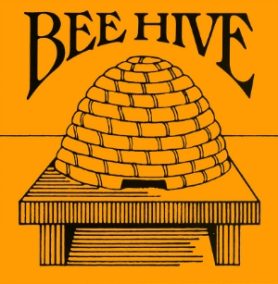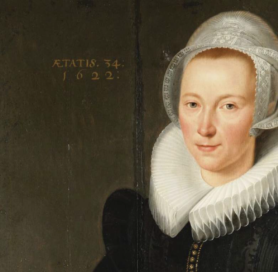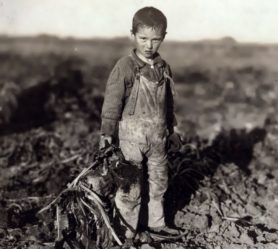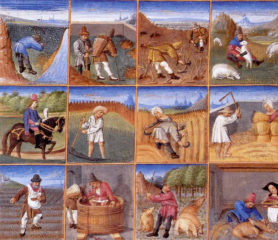Blog
Hive-mind: Best Economic History articles for Bachelors students
 Recently we did a hive mind exercise with the group of scholars who work in the Economic and Social history group at Utrecht University. I had been asked to look at a research methods course manual for second year undergraduate students, and provide a recommendation for an article that was quantitative in nature, reflected recent debates and wasn’t too technical for the numerically-allergic. I sent out an email to my colleagues to ask which economic history articles they thought contained novel and innovative data and would work well with students. I got quite a few responses. I have listed them below, with short descriptions, for anyone interested:
Recently we did a hive mind exercise with the group of scholars who work in the Economic and Social history group at Utrecht University. I had been asked to look at a research methods course manual for second year undergraduate students, and provide a recommendation for an article that was quantitative in nature, reflected recent debates and wasn’t too technical for the numerically-allergic. I sent out an email to my colleagues to ask which economic history articles they thought contained novel and innovative data and would work well with students. I got quite a few responses. I have listed them below, with short descriptions, for anyone interested:
- Anne McCants (2008). Poor consumers as global consumers. The Economic History Review. If this had been a vote then McCants’ paper would have won it with two people suggesting it as one that worked really well with students. The paper treats probit inventories at length and uses simple statistics to say something about coffee and tea consumption for the lower-middleclass in Amsterdam. The two who suggested it felt it worked really well with students, giving them a lot of scope to discuss pros and cons of the chosen methods and a chance to interpret a simple table.

- Tine De Moor & Jaco Zuijderduijn (2013). The art of counting. Reconstructing numeracy in the middle and upper classes on the basis of portraits in the early modern Low Countries. Historical Methods, – this paper is by members of the group here in Utrecht and is a personal favourite of mine as I was there are the moment the inspiration for writing it struck – namely during our annual staff-outing in 2012 when we visited Culemborg. In the local gallery Tine and Jaco spotted a Aetates Sui portrait (one on which the age of the depicted individual was recorded) and realised they could use these to reconstruct numeracy via the age heaping method (see age heaping post). The resulting paper is a fascinating look at how visual sources can be given a different twist (it is also full of beautiful colour reproductions of the Aetates Sui paintings).
- Oscar Gelderblom and Bas van Bavel (2009). The Economic Origins of Cleanliness in the Dutch Golden Age. Past and Present. Another collegial paper about Dutch house-proud attitudes. As a long-term expat one of the things I can tell you visitors always remark on is how easy it is to see into Dutch living-rooms. This article explores some of the underlying economic rationales for wanting to present a clean and neat house to the outside world and, as opposed to more cultural/religious interpretations of the phenomena boils it down to the importance of hygiene in dairy production – a key industry in the Netherlands both historically and right up to the present.

- Joyce Burnette (2011). Child day-labourers in agriculture: evidence from farm accounts, 1740–1850. The Economic History Review. A combination of original sources (parliamentary enquiries and tax registers) besides a number of quantitative methods. Just like the McCants paper it is a nice one to use with students as it present summary statistics at length but it does then proceed to a regression table, so you can talk the students through the build-up. Written in a very accessible way.
- Bas van Bavel, Eltjo Buringh and Jessica Dijkman (2017). Mills, cranes, and the great divergence: the use of immovable capital goods in western Europe and the Middle East, ninth to sixteenth centuries. The Economic History Review. This paper is again by a group of colleagues from Utrecht University. Using a wide variety of sources they explore why machine usage increased in Europe while decreasing in the Middle-east. Jessica Dijkman already wrote a short blog piece on this article for the blog – see here.
- Tim Leunig, Chris Minns and Patrick Wallis (2011). Networks in the Premodern Economy: The Market for London Apprenticeships, 1600—1749. The Journal of Economic History. This is a paper with an elaborate section on the data used, and a clear discussion of the results. They link guild archives to tax registers to be able to draw out conclusions about apprentices and their masters.
- Wiebke Schulz, Ineke de Maas and Marco van Leeuwen (2015). Occupational career attainment during modernization. A study of Dutch men in 841 municipalities between 1865 and 1928. Acta Sociologica. This article is an interesting one to use when teaching Dutch students as it gives the chance to introduce them to HSN (Historical Sample of the Netherlands). It uses regression analysis and is very clear about the hypotheses that they are trying to test but also goes into detail on the construction of various control variables.
- Gregory Clark (2017). Growth or stagnation? Farming in England, 1200–1800. The Economic History Review. As this paper takes aim at another’s work (i.e. Broadberry et. al. British economic growth, 1270–1870) it is a) a nice way into the data used to chart economic growth and b) allows students a way into a debate about quantitative history.

- Frankema, E. and Jerven, M. (2014). Writing history backwards or sideways: towards a consensus on African population, Economic History Review, 67(4), pp. 907-931. – a contribution from African Economic History, currently a burgeoning field but from which it is sometimes challenging to find papers appropriate for students.
- Horrel, S., Meredith, D., and Oxley, D. (2009). ‘Measuring misery: Body mass, ageing and gender equality in Victorian London, Explorations in Economic History 46, pp. 93-119. For exploring alternative measures of standards and introducing a gender perspective with students, this article is very appropriate.
If anyone has additional suggestions that have worked well in their own teaching let me know! See here for my contact details.

